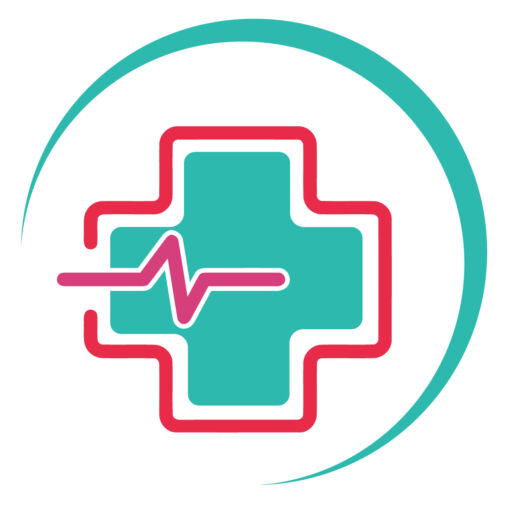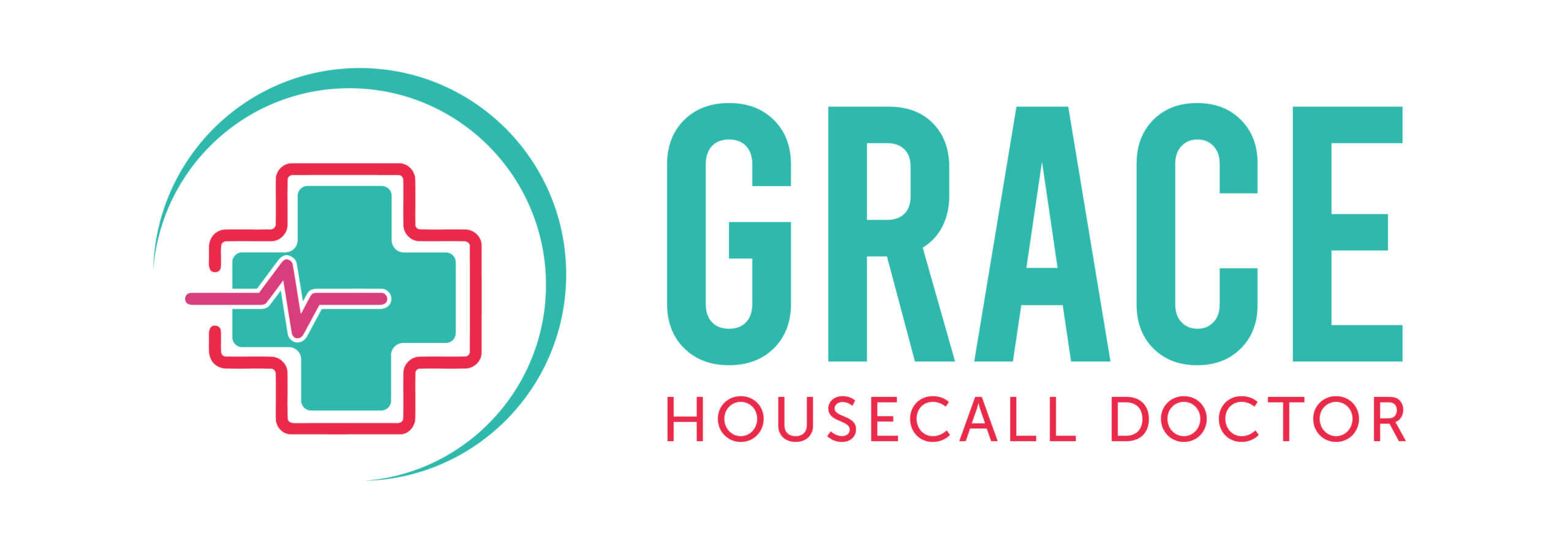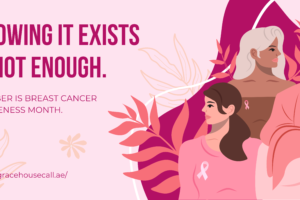National Cancer Prevention Month

National Cancer Prevention Month is observed in February. It is a time to promote global awareness of cancer prevention, detection, and treatment. It is critical to recognize the heavy burden of cancer and the need to raise awareness to fight this illness as we celebrate this month of love and hope. Cancer is one of the world’s major causes of mortality, affecting millions of lives annually. Although the precise causes of cancer are still unknown, several established risk factors can raise a person’s chance of getting the disease. We can reduce the worldwide effect of cancer by proactively addressing these risk factors and supporting healthy lifestyle choices.
What are the effects of cancer?
Cancer is a multifaceted illness defined by aberrant cells in the body growing and spreading out of control. With an anticipated 10 million deaths from cancer in 2020 alone, action is desperately needed. Cancer affects people of all ages, genders, and backgrounds, making it a global issue that necessitates a coordinated response. The rising incidence of cancer emphasizes how critical it is to spread prevention strategies and increase public knowledge in order to safeguard people’s health everywhere.
What are the risk factors for cancer?
Although the precise causes of cancer are numerous and intricate, there are a number of common risk factors that can raise a person’s chance of getting the disease. Among these risk factors are:
Family History
Due to inherited genetic mutations, a higher risk may be indicated by a family history of breast, ovarian, uterine, or colorectal cancer.
Smoking and Tobacco Use
Smoking and tobacco use contain carcinogens that can impair immunity, raising the risk of bladder, throat, and lung cancer.
Usage of Alcohol
Due to inflammation and cell damage, excessive alcohol consumption has been connected to pancreatic and stomach cancers.
Anatomical Elements
Changes in hormone levels can result in cancers of the breast, endometrium, ovary, prostate, testicles, thyroid, and osteosarcoma.
Surface to Chemicals
Often found in workplaces, carcinogenic substances like asbestos and benzene can harm DNA and increase the risk of cancer.
Infections
The risk of developing some cancers, including cervical cancer, can be raised by viral infections such as hepatitis B or C and HPV.
Surface Radiation
Long-term exposure to high-energy radiation can harm DNA and increase the risk of cancer from sources such as nuclear accidents or therapy.
Food components
Cancer risk can be raised by diets heavy in red meat, processed meat, and sugar-filled beverages.
Fatality
Obesity and being overweight increase the risk of developing various cancers, such as kidney, colon, and breast cancer.
Activity Outside
Frequent exercise can lower the risk of cancer by reducing inflammation and helping to maintain a healthy weight.
Sun Exposure
The risk of skin cancer, including melanoma, can be raised by UV radiation from the sun or tanning beds.
Persistent Inflammation
Prolonged inflammation brought on by illnesses or irritant exposure can harm DNA and raise the risk of cancer.
Hereditary
Even though genetics is not the only factor in most cancers, some can run in families because of inherited mutations.’
Age
Age is a risk factor for cancer, with most cases striking those over 65 as a result of accumulated genetic mutations.
Climatic Factors
The body can absorb carcinogens from the environment, such as air pollution, which increases the risk of cancer.
Occupational Hazards
Certain jobs that expose workers to chemicals, radiation, or asbestos may raise their risk of developing cancer.
Means of Reproduction
Cancer risk in organs such as the breast and ovary can be influenced by variables such as early menstruation, late menopause, and reproductive choices.
How can we encourage the prevention of cancer by making healthy lifestyle choices?
Many lifestyle-related risk factors for cancer can be addressed by making healthy choices, but certain risk factors, like genetic susceptibility and family history, cannot be changed. Here are eight strategies to lower your chance of getting cancer:
- Give up or cut back on tobacco use and smoking: The risk of cancer can be considerably decreased by quitting smoking, as tobacco use is one of the main causes of cancer.
- Obtain Vaccinations: Immunizations against viruses like hepatitis B and HPV can lower the risk of developing some malignancies.
- Maintain a Healthy Diet: Eating a diet high in fruits, vegetables, whole grains, and lean meats can lower the risk of developing cancer.
- Keep a Healthy Weight: Retaining a healthy weight can lower the risk of cancer because obesity is a major risk factor for the disease.
- Continue Your Exercise: Exercising regularly can lower your risk of cancer and help you maintain a healthy weight.
- Take Care of Your Sun Protection Skin cancer risk can be decreased by limiting sun exposure, applying sunscreen, and donning protective clothes.
- Reduce Alcohol Intake: Drinking too much alcohol has been connected to a higher risk of developing several types of cancer.
- Get Screened Frequently: Survival rates and cancer outcomes can be enhanced by early detection achieved through routine screenings.
Increasing People’s Awareness and Education to Empower Them
The importance of early detection and cancer prevention is highlighted throughout National Cancer Prevention Month. We can enable people to take charge of their health and lower their risk of acquiring cancer by increasing awareness of cancer risk factors and encouraging healthy lifestyle choices. Education is essential, and we can support people in making decisions about their health and well-being by offering resources and information.
Awareness of Cancer Risk Factors
Cancer risk factors are substances or conditions that raise the chance of cancer development. Typical risk factors consist of exposure to toxins, food, physical inactivity, and smoking. Lung, mouth, throat, pancreatic, bladder, and kidney cancers are among the many cancers for which smoking is a well-known risk factor. The carcinogenic properties of tobacco smoke include the ability to break DNA and cause unchecked cell proliferation. A key factor in the development of cancer is diet.
A diet heavy in red meat, processed foods, and sugar-filled drinks has been linked to a higher risk of cancer. On the other side, because they include vital nutrients and antioxidants that shield cells from harm, a diet high in fruits, vegetables, whole grains, and lean meats can help lower the risk of cancer. Another important risk factor for cancer is inactivity. By boosting immunity and lowering inflammation, regular exercise lowers the risk of cancer and helps maintain a healthy weight. Cancer risk can be raised by exposure to carcinogens such as benzene, asbestos, and certain chemicals. These chemicals have the potential to harm DNA and raise the risk of developing cancer.
Genetics’ Part in Cancer Risk
One’s risk of acquiring cancer can also be influenced by genetic factors. Breast, ovarian, and prostate cancer risk is raised by certain gene mutations, including BRCA1 and BRCA2. People can make educated decisions about their health and their risk assessment with the use of genetic testing and counseling. In genetic counseling, a person’s risk is evaluated, family history of cancer is discussed, and information regarding genetic testing is given. A person’s DNA is analyzed as part of genetic testing to look for any mutations that could raise their risk of developing cancer. With the use of this information, people can lower their risk by getting screened more frequently or thinking about getting surgery or medicine.
A Balanced Diet and Proper Nutrition to Prevent Cancer
A nutritious diet is essential for preventing cancer. Consuming a diet high in fruits, vegetables, whole grains, and lean meats gives you the vital nutrients and antioxidants you need to keep your cells healthy and lower your risk of cancer. Vitamins, minerals, and antioxidants found in fruits and vegetables help shield cells from harm and lower the chance of cancer. Because whole grains are abundant in fiber, they can lower the risk of colon cancer and help people maintain a healthy weight.
Lean proteins, which can lower the risk of cancer, are beneficial for general health and can be found in foods like beans, chicken, and fish. Red and processed meats should be consumed in moderation because they have been associated with a higher risk of cancer. Further lowering the risk of cancer can be achieved by keeping a healthy weight, abstaining from tobacco and excessive alcohol use, and continuing an active lifestyle.
The Significance of Exercise
Maintaining general health and lowering the risk of many diseases, including cancer, requires regular physical activity. Maintaining a healthy weight is crucial because obesity is known to increase the chance of developing several types of cancer. Physical activity can help with this. Furthermore, exercise can lower inflammation, enhance immunological response, and balance hormone levels—all of which can lower the risk of cancer. It has been demonstrated that exercise lowers the risk of prostate, endometrial, breast, and colon cancers. To get the benefits of physical activity for cancer prevention, aim for at least 150 minutes of moderate-intensity exercise each week, such as brisk walking, cycling, or swimming.
Removing carcinogens
Chemicals known as carcinogens have the ability to damage DNA or disrupt normal cell division, which can lead to cancer. Tobacco smoke, asbestos, benzene, and certain chemicals are common carcinogens. Steer clear of tobacco and secondhand smoke, and limit your exposure to chemicals and toxins in the environment to lower your risk of cancer. Wear safety gear and adhere to procedures when handling or being around potentially dangerous materials. By offering vital nutrients and antioxidants that enhance the body’s innate defenses against cancer, a diet rich in fruits, vegetables, whole grains, and lean proteins can also help shield against the damaging effects of carcinogens.
Screening and Early Detection
To diagnose cancer at an early stage, when therapy is most successful, routine cancer screenings are crucial. Mammograms, colonoscopies, Pap smears, and prostate-specific antigen (PSA) testing are examples of screening tests that can identify cancer or precancerous diseases before symptoms appear. Prompt therapy after early detection can lead to better results and higher survival rates. It’s critical to go over screening alternatives with our doctor and abide by recommendations made in light of your age, gender, and risk factors.
Sun Protection and Preventing Skin Cancer
One of the most prevalent cancers, skin cancer is also one of the most avoidable. Keeping your skin shielded from the sun’s damaging rays will help lower your chance of getting skin cancer. Stay out of the sun for as long as possible, especially between the hours of 10 a.m. and 4 p.m. when the sun is at its fiercest. Put on sun protection gear, such as caps and sunglasses, and apply sunscreen with a minimum SPF of 30. Make sure you reapply sunscreen after swimming or perspiration, or every two hours. Additionally, keep a regular eye out for any changes or anomalies on your skin and instantly report them to your healthcare provider.
In conclusion, leading a healthy lifestyle can help lower your risk of cancer and improve your general health and well-being. This includes engaging in regular physical activity, avoiding toxins, getting frequent cancer screenings, stopping smoking, consuming alcohol in moderation, and using sun safety measures. These easy actions can have a big impact on global cancer burden reduction and quality of life improvements for people and communities.
NOTE
Let’s unite to spread healthy lifestyle choices, increase awareness, and support cancer patients as we observe National Cancer Prevention Month. We along with the doctors can effectively contribute to the fight against cancer by cooperating to address cancer risk factors and promote preventative actions. Collectively, we have the power to inspire optimism, disseminate love, and improve the lives of millions of cancer patients throughout the globe.








